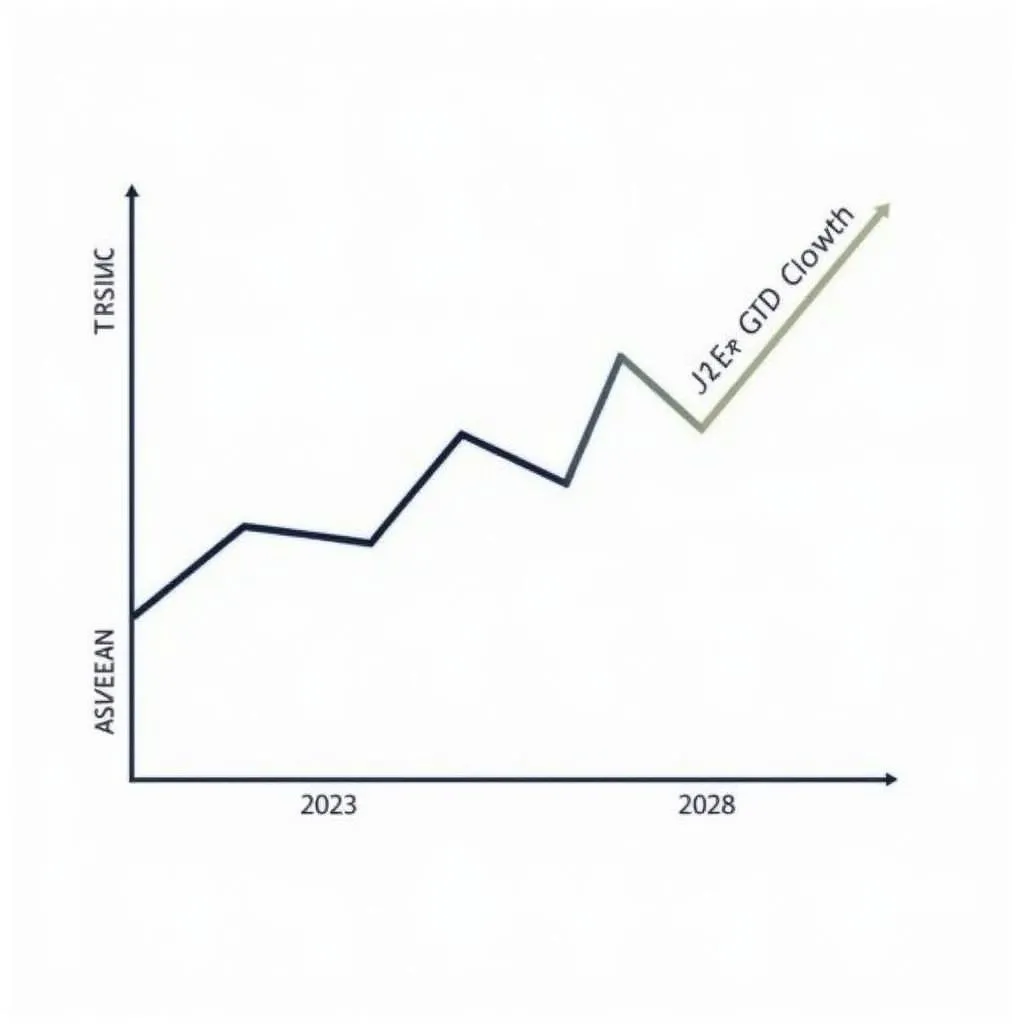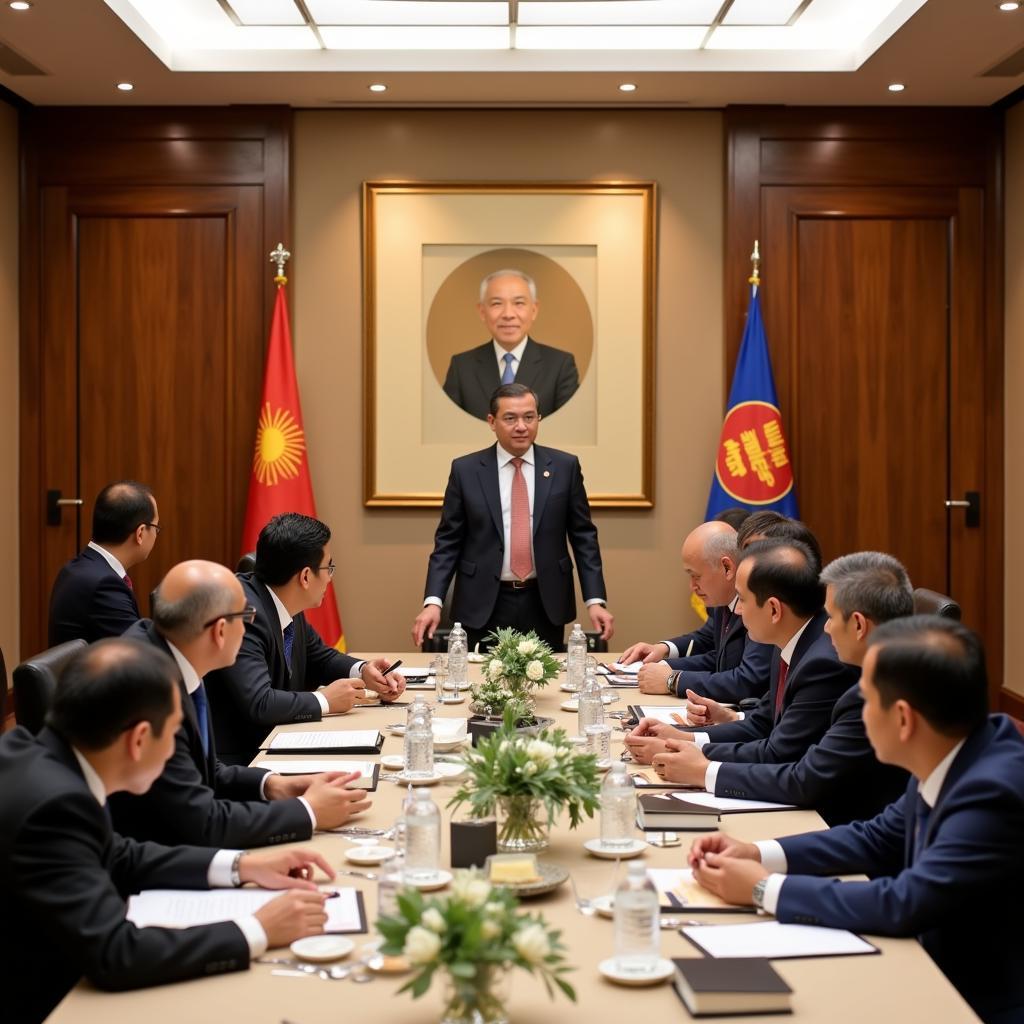The Association of Southeast Asian Nations (ASEAN) has witnessed remarkable achievements and success in the past decades, transforming the region into a dynamic economic powerhouse and a hub for cultural exchange. From its humble beginnings in 1967, ASEAN has emerged as a testament to the power of cooperation and regional integration, fostering peace, stability, and prosperity among its ten diverse member states.
Economic Growth and Integration: A Cornerstone of ASEAN Success
One of the most notable achievements of ASEAN is its remarkable economic growth. Over the past few decades, the region has transitioned from a primarily agricultural base to a diversified and integrated economic zone. The establishment of the ASEAN Free Trade Area (AFTA) in 1992, followed by various economic agreements, has spurred intra-regional trade and investment, making ASEAN one of the fastest-growing economic blocs globally.
 ASEAN Economic Growth Chart
ASEAN Economic Growth Chart
Maintaining Peace and Stability: A Foundation for Prosperity
ASEAN’s commitment to regional peace and stability is evident in its core principles of non-interference, consensus-building, and peaceful resolution of disputes. These guiding principles have played a pivotal role in preventing conflicts among member states and fostering a climate of dialogue and cooperation. The organization’s active involvement in addressing regional security challenges, such as transnational crime and maritime disputes, further underscores its dedication to maintaining a stable and secure environment conducive to growth.
Promoting Social and Cultural Cooperation: Strengthening ASEAN Identity
Beyond economic progress, ASEAN has made significant strides in promoting social and cultural cooperation among its members. Recognizing the richness and diversity of its cultural heritage, ASEAN actively promotes cultural exchanges, educational programs, and people-to-people interactions to enhance understanding and appreciation of the region’s shared values. This focus on social and cultural cohesion strengthens ASEAN’s identity on the global stage and fosters a sense of unity among its citizens.
 ASEAN Cultural Exchange Program
ASEAN Cultural Exchange Program
ASEAN at 30: Reflecting on Past Triumphs, Envisioning Future Opportunities
As ASEAN commemorates its 30th anniversary, it is crucial to reflect on the organization’s journey and acknowledge its numerous achievements and successes. From fostering economic growth and maintaining peace to promoting social and cultural cooperation, ASEAN has made significant contributions to the well-being of its people and the stability of the region. The organization’s commitment to these core values, coupled with its adaptability and resilience in the face of challenges, positions it well to navigate the complexities of the 21st century and seize new opportunities for growth and development.
Looking ahead, ASEAN faces various opportunities and challenges. As the region continues to integrate economically, it must address issues of inclusivity and sustainability to ensure that the benefits of growth are shared equitably. Furthermore, ASEAN must continue to adapt to the evolving geopolitical landscape, strengthening its role as a regional leader in promoting peace, stability, and cooperation.
Conclusion: A Legacy of Achievements, A Future of Promise
The achievements and success of ASEAN for the past decades are a testament to the power of regional cooperation and integration. As ASEAN continues to evolve, its unwavering commitment to its founding principles will remain crucial in navigating future challenges and seizing new opportunities for growth, development, and prosperity for all. By leveraging its collective strengths and embracing its shared values, ASEAN is poised to solidify its position as a vibrant and influential player on the global stage.
FAQ
1. What are some key achievements of ASEAN?
Some key achievements of ASEAN include establishing a free trade area, promoting regional peace and stability, fostering social and cultural cooperation, and enhancing the region’s global standing.
2. How has ASEAN contributed to economic growth in Southeast Asia?
ASEAN has spurred economic growth in Southeast Asia by creating a free trade area, attracting foreign investment, facilitating trade, and promoting regional integration.
3. What is the significance of ASEAN’s focus on social and cultural cooperation?
ASEAN’s emphasis on social and cultural cooperation promotes understanding and appreciation among member states, strengthens regional identity, and fosters a sense of unity and shared values.
4. What are some future challenges and opportunities for ASEAN?
Future challenges include addressing issues of inclusivity and sustainability, adapting to the evolving geopolitical landscape, and managing regional security concerns. Opportunities lie in further economic integration, leveraging technological advancements, and strengthening its role as a global player.
5. How can I learn more about ASEAN’s achievements and future endeavors?
You can explore more about the achievements and success of ASEAN for the past decades on our website, especially regarding ASEAN’s 30th anniversary. For a comprehensive overview of ASEAN’s history, achievements, and future plans, you can also visit the official website of the Association of Southeast Asian Nations.
For any inquiries or assistance regarding ASEAN and its initiatives, please don’t hesitate to contact us:
Phone Number: 0369020373
Email: [email protected]
Address: Thon Ngoc Lien, Hiep Hoa, Bac Giang, Vietnam
Our dedicated customer support team is available 24/7 to assist you.

